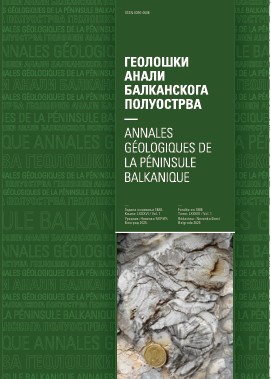Badenski ciklusi u Srbiji
Badenian cycles of Serbia
Abstract
Orogemc processes of the Second Styrian phase (young Styrian phase) on the territory of Serbia led to rising of its central and southern parts, where from lakes drained and left an extensive land, and subsidence of the northern parts, which were ingreesed by sea. This marked the beginning of the Lower Badenian tectonic-palaeogeographic-stratigraphic cycle, which continued to the first effects of the Moldavian (Leitha) phase at the turn from the Middle to the Upper Badenian. The Upper Badenian cycle began with Moldavian (Leitha) processes which operated as the First Attican phase to the Badenian/Sarmatian. Stratigraphically, the Lower Badenian cycle begins with clastic transgressive over the varied palaeorelief. With the abatement of geodynamic processes, the sediments laid over clastics (Bučvar conglomerates) are Višnjica clays and Konjarnik Schlier. This development of the Lower Badenian cycle can be traced from Belgrade environs, across Pannoman basin, Vojvodina, and NW Serbia, on one side, and Lower Morava valley and Negotinska Krajina (Dacian basin), on the other.
The Upper Badenian orogeny lasted from the Moldavian (Leitha) to the First Attican phase. It is marked by clastics transgressive over Lower Badenian rocks and over the palaeorelief, represented by Rakovica sands and topped by Tašmajdan limestones. The Upper Badenian cycle, including Upper Badenian transgression, extended to Paraćin in the south.
The central and southern regions of Serbia were uplifted during the Second Styrian orogeny, their lakes from the Carpathian emptied, leaving almost the entire dry and exposed to erosion.
Copyright (c) 1997 Geološki anali Balkanskoga poluostrva

This work is licensed under a Creative Commons Attribution 4.0 International License.










